Discover the Wabanaki-Acadian Forest with Thriving Forests
Spotlight on the red spruce – Picea rubens – gawatgw
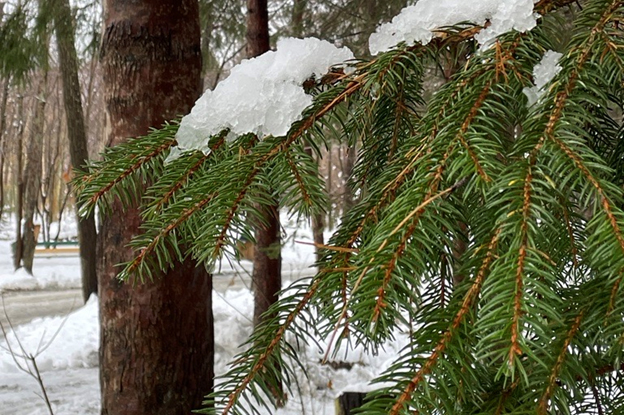
Through Thriving Forests, a program dedicated to understanding the ecological importance of Wabanaki-Acadian Forest in Nova Scotia, we’re shining a spotlight on the red spruce this month.
Red spruce is the provincial tree of Nova Scotia and is native to the Wabanaki Forest. As a slow growing, shade tolerant species, it can survive in the understory of a forest for many years. Typically, a mature red spruce will reach a height of up to 25 metres tall, but in some cases, it can grow up to 40 metres. The longest lived of the native spruces has been found to reach up to 450 years old.
Uses of red spruce
Red spruce wood is relatively soft and light in colour, making it valuable for various purposes, including lumber, pulp and Christmas trees. It is also an excellent tonewood and is commonly used in high-end acoustic guitars.

Identifying red spruce
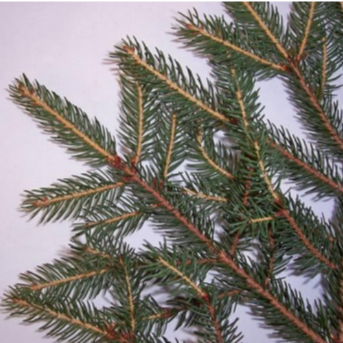
The back of a red spruce branch. Twigs are reddish brown and new growth is yellowish brown.
red spruce
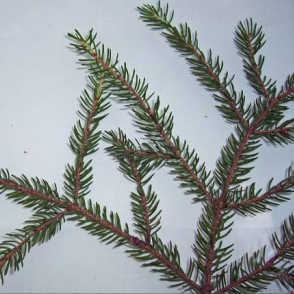
The back of a black spruce branch. Twigs are brown to reddish and new growth is light green.
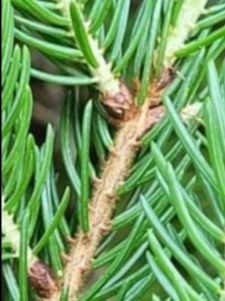
There are three spruce species native to Nova Scotia and they can be difficult to tell apart. Red and black spruce often hybridize, making it even harder to differentiate. Generally, spruce needles have sharp points and four sides which enables them to roll between fingers (as opposed to fir or hemlock needles which are flat).
White spruce needles have a strong odor when crushed, and grow on hairless twigs, while red and black spruce have hairy twigs, especially on new growth. These hairs are small and may require a magnifier for clear visibility.
When determining whether a group of trees are red spruce or black spruce, it can be helpful to examine the site for clues. If it is a poor site with a limiting factor (like wet soil), the trees are likely to be black spruce. If the site is average or rich, the trees are more likely to be red spruce. Additionally, red spruce shed its cones every year, whereas black spruce tends to hold onto cones near the top of the tree for a long time.

Identifying red spruce seeds
Red spruce, like other native conifers, produces seed cones in the early autumn. Their seed cones begin to ripen during late-September to October in Atlantic Canada. Unlike Eastern white pine, red spruce’s cones are much smaller in size, reaching only 2-5cm in length. The light-brown cones encase small, dark-brown seeds measuring 3-4 mm in length.
To join our network of tree monitors or if you know a stand of trees in your community that you would like to direct us to, please reach out via thrivingforests@cleanfoundation.ca.
If you are interested in learning more about Thriving Forests program, click below.
#meetZevvy
Clean Foundation’s Next Ride campaign has been touring Nova Scotia, educating the public about the benefits of owning electric vehicles (EVs) and getting people behind the wheel to test the vehicles out. People are overwhelmingly enthused by the performance of the...
Warmth and energy efficiency on the edge of the sea
The Clean Energy Financing program helps a family on Long Island upgrade their home’s efficiency, feel warmer, and save money – while paying for the retrofits at a pace they can afford.Sipping tea while looking out the living room window of her 200-year-old house, a...
Meet the Tanner Family
Meet the Tanner Family. Like so many of us, heating their house took a big chunk out of the monthly budget. Improving the energy efficiency of their home would help, but the upfront costs can be a challenge. Fortunately, they qualified for HomeWarming, and it’s made a...


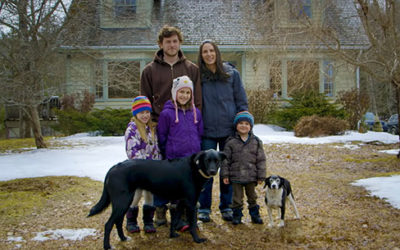
Recent Comments